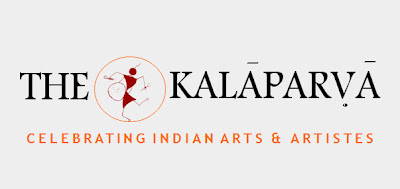The evening of 15th May 2012 was dedicated to the folk dance and music of India, the venue being the Gallus Theatre, Frankfurt am Main. The sheer variety in the folk and tribal dances of India is fascinating. To be able to experience this colourful and exuberant performance away from home made the experience all the more special.
To celebrate 60 years of Indo - German diplomatic ties, the Consulate General of India, Frankfurt, along with the Indian Council of Cultural Relations (ICCR) is organizing, Days of India in Germany 2012-2013; connecting cultures is the guiding theme of the celebrations. Benjamin Watson, the American footballer, aptly sums up the essence of folk dance, "Although our backgrounds and languages may be different, one thing isn't so different, and that is - everybody likes to have a good time. If there's one language that's universal, it's dance, particularly folk dance". That spring evening this mood was all too evident.
The artistes belonged to The Kedar Art and Research Centre which has been working to promote Indian Art and Culture. Under the aegis of eminent artist the late Pratibhaji Pandit, this cultural troupe is being trained in various Indian dance forms like Bharatnatyam and folk dances from different regions of the country. In the last 25 years, this group comprising talented artistes has travelled to different parts of the world including Europe, USA, Australia, New Zealand, East Africa and Japan, offering glimpses of the rich Indian cultural heritage.
The programme commenced with a Vandana, performed in Bharatnatyam style to a composition by the eminent Hindi Poet Shri Mythili Sharan Gupt. In a span of about two hours the artistes showcased a myriad of Indian tribal and folk dance forms from the states of Gujarat, Rajasthan and Andhra Pradesh.
Gujarat has been blessed with a rich tradition of performing arts. Known as the 'Land of Festivals' a number of fairs and festivals are celebrated in the state accompanied with traditional dance and music performances. Garba, the cultural synonym of Gujarat, was the next dance performance. This dance form which emphasizes youth, vigour and energy was performed with aplomb and the dancers in their colourful costumes and traditional jewellery set the mood for the evening.
The exuberance continued with Raas, a dance from the Kutch and Saurashtra region. To the accompaniment of musical instruments the body movements and footwork of the dancers was vigorous and attractive.
What followed next was Supda dance. Supda, is a hand winnower used to segregate grains after the harvest. The artistes narrated the woes of young married girls/housewives, who have to work the whole day and still tolerate the sarcasm of the in-laws in an interesting style. The melodious music and eye-catching costume of Adivasi Nrutya, a tribal dance from the Chhota Udepur region was well applauded. This is a popular dance form and is performed on various occasions and festivals.
Titodo, a folk dance from the Saurashtra region was performed by the dancers balancing brass plates in their hands while dancing to the tunes of music. The artistes accomplished the balancing acts with graceful ease much to the delight of the audience.
The programme culminated with the Lambadi dance. This dance is performed by the tribals of Andhra Pradesh, who migrated from Rajasthan some 500 years ago. The strikingly beautiful and bright costumes of the dancers embroidered with glass beads and mirrors and ornate jewellery creatively depicted the rich blend of the two diverse cultures.
It was a show that not only entertained but also helped in showcasing the wide spectrum of the traditional folk culture of India. It was an enriching journey filled with colour, energy and vigour.

